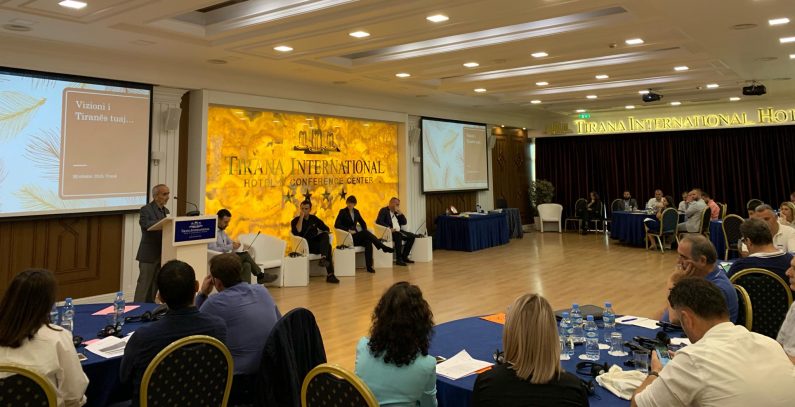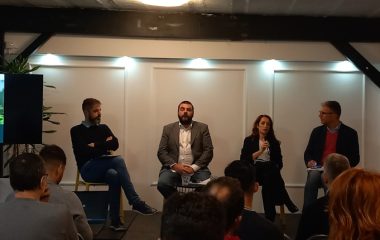
Photo: GIZ ORF-EE
The Municipality of Tirana has invited 40 stakeholders from public institutions, the civil society, academia, and public and private companies to develop a joint vision for Tirana’s first Sustainable Urban Mobility Plan (SUMP), asking the question: What do you want Tirana to look like in 2030?
The Municipality of Tirana is a partner in the regional project “Sustainable Urban Mobility in SEE Countries II” (SUMSEEC II) under the Open Regional Fund for South-East Europe – Energy Efficiency (ORF-EE). The project is funded by the German Ministry for Economic Cooperation and Development (BMZ) and is implemented by GIZ.
The vision developed by the stakeholders in Tirana lays the foundation for the SUMP – a strategic plan designed to satisfy the mobility needs of people and businesses in cities and their surroundings for a better quality of life.
Erion Veliaj, Mayor of Tirana, highlighted: “Sustainable urban mobility is a serious and important matter for our city. In 4 years, we have done a great job in increasing public walkable spaces, built more than 40km of bike lanes, issued several licences for electric taxis that operate daily in Tirana, tested the first electric bus in our public transport and very soon we’ll launch our first green bus line. Developing a smart, green and open city is the solution, and our shared challenge, that is why we take full commitment to the SUMP process and have the dedication and energy to take further steps in fulfilling our goals.”
Ismail Beka, GIZ, added: “With the dynamics of the demographic development of these years of transition and the uncontrolled urbanization of Tirana, a vision and concrete steps to significantly improve safe and fast mobility for Tirana’s inhabitants by public transport and by bike are important for the future of the city.”
Anna Loffing, urban planner with SEE Change Net (expert of the German Center for International Migration and Development; CIM), said: “Planning for people requires planning with people. Sustainable urban mobility planning needs to be a democratic and transparent process, and that means engaging citizens and stakeholders. How we get around in cities affects everyone in their daily life!”


















Be the first one to comment on this article.